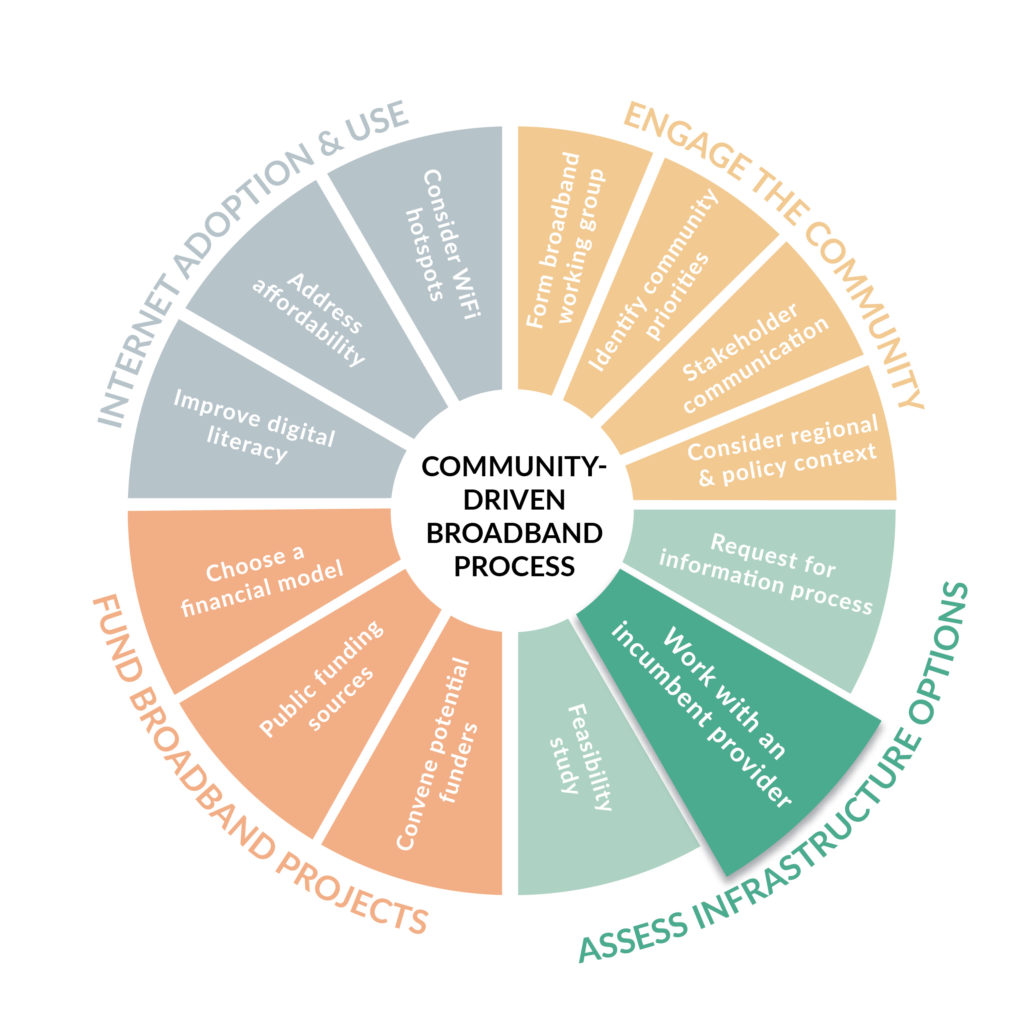
Rural communities in Maine often have very small populations and sometimes have a hard time getting attention from incumbent service providers. The communities of Frenchboro, Matinicus, Isle Au Haut, and Swan’s Island came together as a group with the Island Institute to coordinate shared goals and meet with their incumbent service provider, TDS Telecom. With power in numbers, the islands were able to better understand TDS’s planned upgrades and make a case for the upgrades meeting community goals around broadband.
IMPLEMENTATION STEPS
Community members participated in the 2015 Maine Island Broadband Conference.
With help from the Island Institute, community members set up a series of conference calls to strategize on how to best approach TDS prior to the company’s planned upgrades on the islands. They wanted to use the meeting to reinforce their goals around having upgrades meet the federal standard for broadband (25Mbps/3Mbps) and discuss possibilities of creating a public-private partnership to fill any service gaps after the upgrades were completed.
In January 2016, the islanders met with TDS officials as a group and detailed their communities’ goals. TDS officials agreed to work with the communities to meet those goals and said that their upgrades would aim to bring speeds commiserate with the federal standard to the islands. They also agreed to meet with the communities after the upgrades were made to address any service gaps and discuss a possible public-private partnership to address additional service deadspots.
Following that meeting and a few times during the deployment of upgrades, community members with the Island Institute continued to communicate with TDS officials.
KEY FACTORS
- If your community is very small, consider working with other communities who are similarly serviced by an incumbent provider. An organization like the Island Institute that can facilitate these connections and act as a common voice can be helpful in ensuring that economies of scale are realized.
- Strategize before any meeting with an incumbent service provider to make sure that all partners share a common goal and speak with a unified voice. If you don’t know what you want from the service provider, it will be hard for them to respond.
- Come to any meeting with an incumbent service provider with an objective in mind, but be flexible to working within the service provider’s corporate capabilities.
- Propose ways that you might be able work together to ensure that internet service meets your community goals into the future–a one-off negotiation only answers current broadband goals. A long-term relationship means that, as community goals change, the discussion with the service provider can continue to address new objectives.
CHALLENGES
- Incumbent service providers have to ensure that infrastructure investments are economically viable and may request public investment in order to move forward with any improvements.
- Discussions with an incumbent service provider might reveal that they are not interested in a serious public-private partnership, so the community may need to look deeper into working with other internet service providers.
- Connecting with other communities and coordinating goals and strategies can require a lot of time and energy leading up to meetings with internet service providers, but a unified voice of several communities is almost always more powerful than separate communities advocating for their own goals alone.
RESULTS
- The on-island portion of planned TDS upgrades were completed in September 2016.
- Some of the communities now have access to 25Mbps/3Mbps speeds while others are working to identify where gaps in service exist. Swan’s Island decided to use a community survey to identify the efficacy of the upgrades.
Originally published February 2017

